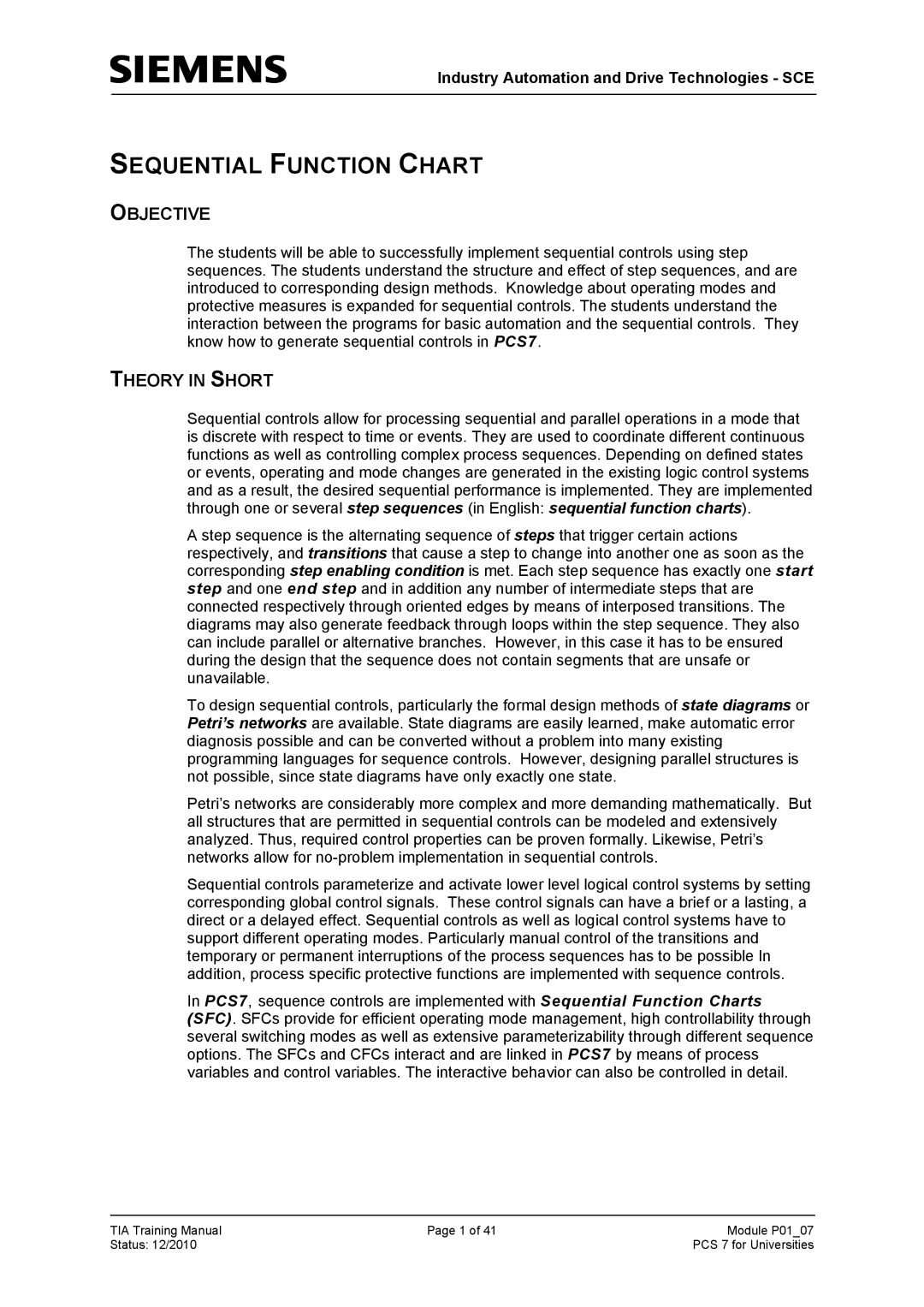
Industry Automation and Drive Technologies - SCE
SEQUENTIAL FUNCTION CHART
OBJECTIVE
The students will be able to successfully implement sequential controls using step sequences. The students understand the structure and effect of step sequences, and are introduced to corresponding design methods. Knowledge about operating modes and protective measures is expanded for sequential controls. The students understand the interaction between the programs for basic automation and the sequential controls. They know how to generate sequential controls in PCS7.
THEORY IN SHORT
Sequential controls allow for processing sequential and parallel operations in a mode that is discrete with respect to time or events. They are used to coordinate different continuous functions as well as controlling complex process sequences. Depending on defined states or events, operating and mode changes are generated in the existing logic control systems and as a result, the desired sequential performance is implemented. They are implemented through one or several step sequences (in English: sequential function charts).
A step sequence is the alternating sequence of steps that trigger certain actions respectively, and transitions that cause a step to change into another one as soon as the corresponding step enabling condition is met. Each step sequence has exactly one start step and one end step and in addition any number of intermediate steps that are connected respectively through oriented edges by means of interposed transitions. The diagrams may also generate feedback through loops within the step sequence. They also can include parallel or alternative branches. However, in this case it has to be ensured during the design that the sequence does not contain segments that are unsafe or unavailable.
To design sequential controls, particularly the formal design methods of state diagrams or Petri’s networks are available. State diagrams are easily learned, make automatic error diagnosis possible and can be converted without a problem into many existing programming languages for sequence controls. However, designing parallel structures is not possible, since state diagrams have only exactly one state.
Petri’s networks are considerably more complex and more demanding mathematically. But all structures that are permitted in sequential controls can be modeled and extensively analyzed. Thus, required control properties can be proven formally. Likewise, Petri’s networks allow for
Sequential controls parameterize and activate lower level logical control systems by setting corresponding global control signals. These control signals can have a brief or a lasting, a direct or a delayed effect. Sequential controls as well as logical control systems have to support different operating modes. Particularly manual control of the transitions and temporary or permanent interruptions of the process sequences has to be possible In addition, process specific protective functions are implemented with sequence controls.
In PCS7, sequence controls are implemented with Sequential Function Charts (SFC). SFCs provide for efficient operating mode management, high controllability through several switching modes as well as extensive parameterizability through different sequence options. The SFCs and CFCs interact and are linked in PCS7 by means of process variables and control variables. The interactive behavior can also be controlled in detail.
TIA Training Manual | Page 1 of 41 | Module P01_07 |
Status: 12/2010 |
| PCS 7 for Universities |
